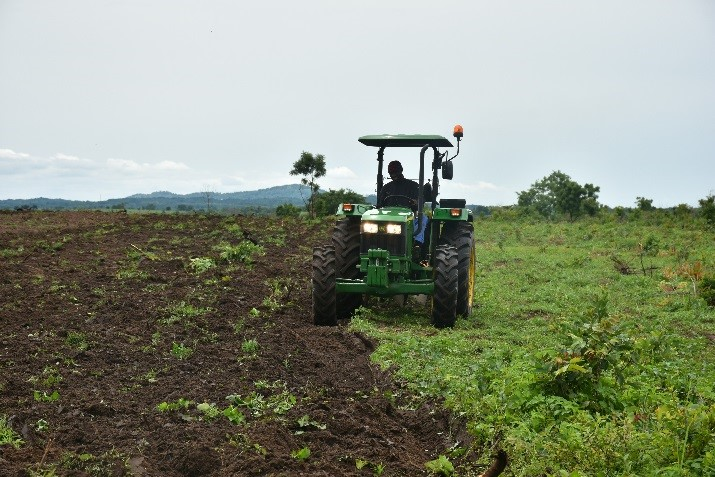
In 2015, President Muhammadu Buhari flagged off the dry season farming campaign in Kebbi State. The initiative was supported by the Central Bank of Nigeria (CBN)’s N20 billion Anchor Borrowers’ Programme (ABP). Before 2015, Nigerian farmers were at the mercy of weather. Most needed crops became scarce in dry seasons due to the lack of technique to cultivate them when the weather condition becomes harsh.
Ever since then, the CBN has supported hundreds of farmers through the ABP, providing them with loans to initiate dry season farming after they must have learned the practice.
In 2018, the Food and Agriculture Organization of the United Nations (FAO) visited Northern Nigeria with the dry season farming technique, the aim was to foster a new approach for farming in Nigeria that will boost food production and alleviate hunger.
Register for Tekedia Mini-MBA edition 19 (Feb 9 – May 2, 2026): big discounts for early bird.
Tekedia AI in Business Masterclass opens registrations.
Join Tekedia Capital Syndicate and co-invest in great global startups.
Register for Tekedia AI Lab: From Technical Design to Deployment (next edition begins Jan 24 2026).
Food security has been paramount among the issues that the UN is looking for their solutions, and Nigeria’s inability to cultivate enough food has played a big role in the crisis. The factors contributing to the hunger and malnutrition that it has yielded as a result beckons help from beyond borders.
In the aim to curtail the escalating brunt of hunger emanating from poor agricultural produce, the FAO embarked on distribution of crops and grains, to the tune of 247 tons. And there was also fertilizer distribution, 25-kg bag of 1, 966 tons.
The distribution took place between November and December of 2018, as at February 2019, farmers were able to harvest their crops. An estimated 198, 099 tons of vegetables, 825 tons of maize and 9 402 tons of rice were harvested.
The dry season farming technique and the enabling supply that defy the tradition of waiting on the rain gradually became popular, especially among individual farmers in northern Nigeria.
Dry season farming utilizes greenhouses, drip irrigation and fertigation, with reduced pesticides. Greenhouses are waterproof but solar netted structures that produce regulated conditions for vegetable cultivation. In fertigation systems, soluble fertilizer and other essential plant micronutrients and insecticides are mixed with water at intervals for growth enhancement and crop protection.
In the cases where greenhouses are used, vegetable related crops are mainly cultivated. They are used with drip irrigation facilities and vegetables grown in them require minimum pesticides because the nets in the greenhouses protect crops from pests. Drip irrigation is sometimes used in the open farmland. The holes are perforated at the calibrated spacing and water drops into the base of each plant.
It has been recognized as the most efficient use of water for agricultural purposes if juxtaposed with flood, boom or sprinkling irrigation system.
Recently, the tradition of dry season farming using greenhouses or open farming has been gaining ground as more farmers are embracing the practice. But the local farmers need to be guided in crop plantations so that it could be profitable. Earlier in the year, the Brands and Marketing Manager at Dizengolff West Africa, Nigeria’s office, Humphrey Otalor, Advised farmers:
“You can plant all kinds of vegetables but it is better to take advantage of what is not planted off rainy seasons. For example, if everybody is growing tomatoes, if I am a greenhouse farmer, I will grow pepper because a few people are growing it.
“Farmers can grow bell peppers, sweet melons, spicy peppers, cucumbers, and with the drip irrigation on the open field, you can grow watermelons. The small-scale greenhouse occupies a space of 8m x 24m and it is sold for about N1.7 million. It includes the irrigation kits, seeds, bags of soluble fertilizer, a sprayer and installation to enable a farmer to start production immediately. This however, does not include the source of water, for a farmer should dig a well of borehole as a source of regular water supply,” he said.
Last week, 9, 000 farmers enrolled for the 2019/2020 dry season farming in Bauchi State, under the Fadama III project, an initiative supported by the Nigeria Incentive Risk Sharing and Lending (NIRSAL) of CBN. The goal has been to make rice production an unseasonal activity in Nigeria, by closing the intervals of unproductivity that have always resulted in the scarcity of farm produce.
However, the growing embrace of dry season farming in Nigeria has not come without its challenges. For farmers who cultivate perishable crops like tomatoes, watermelon and other fruits, the loss of a huge amount of the produce can be discouraging. For instance, tomato farmers in northern Nigeria report losses of over 40 percent of their yield due to poor storage and processing facilities.
For those among the farmers whose farms were financed under the ABP, it is a misfortune that will affect their relationship with the apex bank. The introduction of dry season farming in Nigeria is a development that its yield will result in food security and employment. However, preservation of crops and farm produce is necessary in sustaining the idea. A provision of sustainable storage system or subsidy of farm yields will alleviate the vulnerability of individual farmers who lack the capacity to preserve their crops.




Notify me
Highly interested in this topic as an agric Field Extension Officer.